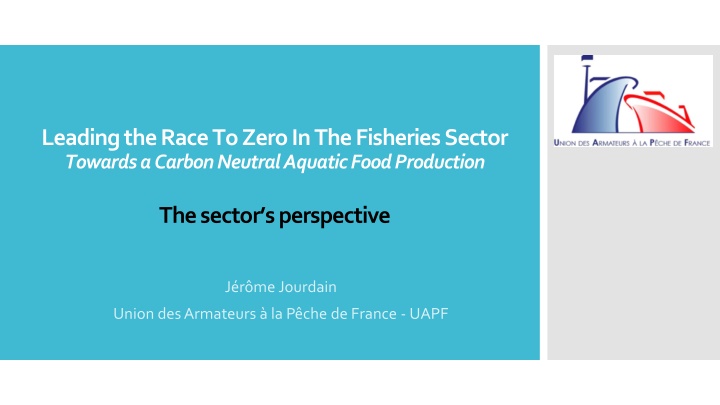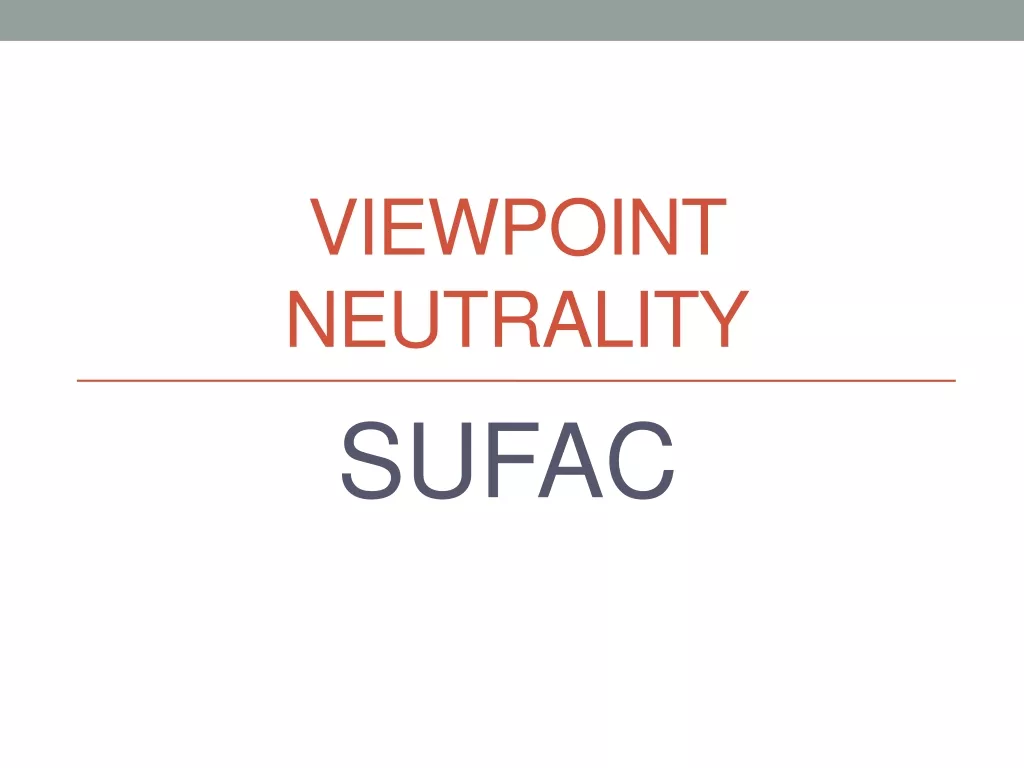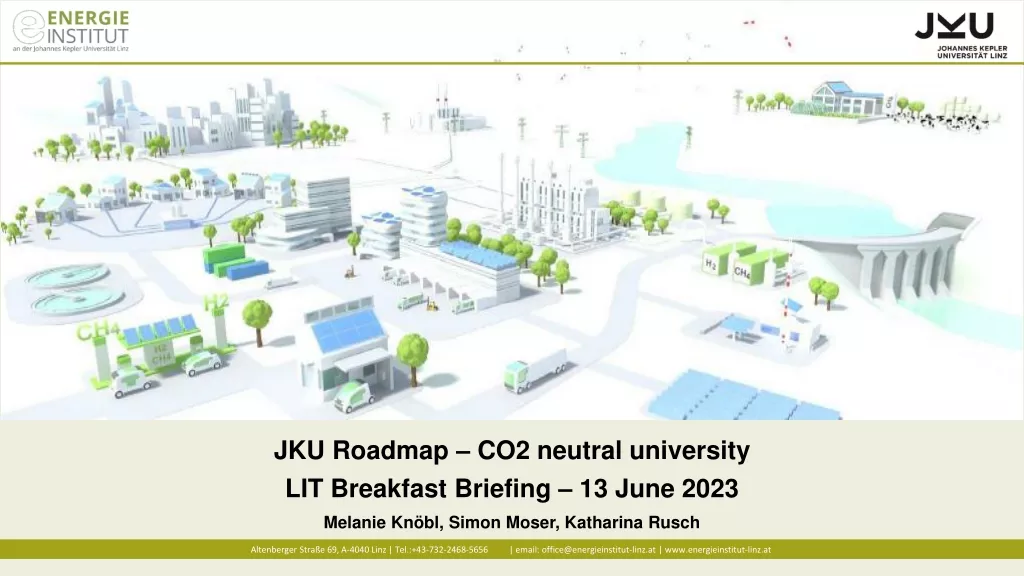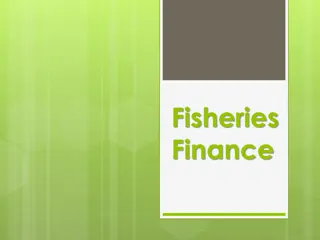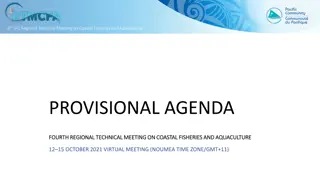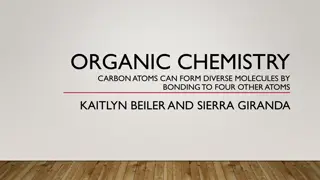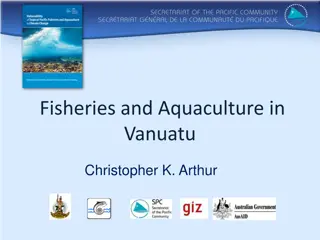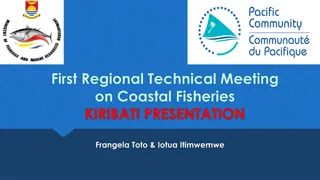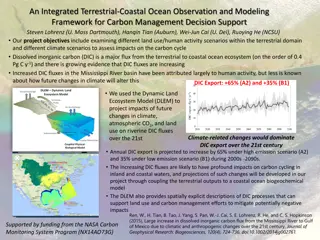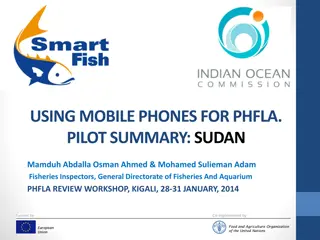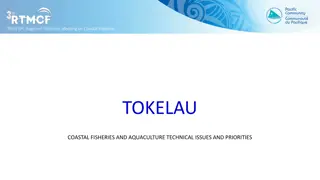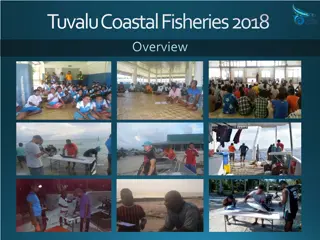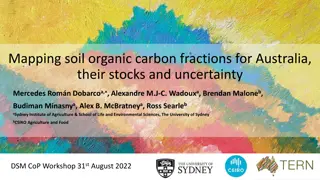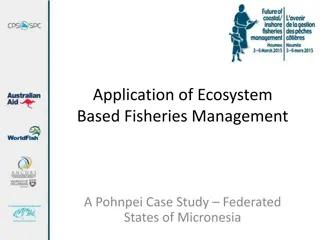Advancing Towards Carbon Neutrality in the EU Fisheries Sector
The EU fisheries sector is making strides towards carbon neutrality, with a focus on reducing greenhouse gas emissions and adopting energy-efficient technologies. Efforts include decreasing CO2 emissions from fishing fleets, implementing regulations for vessel capacity, and exploring innovative equipment and propulsion systems. Challenges remain in achieving total carbon neutrality, but advancements in energy-efficient technologies like LNG, LBG, hydrogen, and biofuels offer promising solutions for a sustainable aquatic food production future.
Download Presentation

Please find below an Image/Link to download the presentation.
The content on the website is provided AS IS for your information and personal use only. It may not be sold, licensed, or shared on other websites without obtaining consent from the author.If you encounter any issues during the download, it is possible that the publisher has removed the file from their server.
You are allowed to download the files provided on this website for personal or commercial use, subject to the condition that they are used lawfully. All files are the property of their respective owners.
The content on the website is provided AS IS for your information and personal use only. It may not be sold, licensed, or shared on other websites without obtaining consent from the author.
E N D
Presentation Transcript
Leadingthe Race To ZeroIn The FisheriesSector Towardsa CarbonNeutralAquaticFood Production The sector sperspective J r me Jourdain Union des Armateurs a la P che de France - UAPF
Whereto place EU fisheries sector? The maritime sectormust reduceitsGHG emissions The Paris Agreement (2015) bringsall nations to undertake ambitious efforts to combat climate change and adapt to its effects Two options : Follow the IMO targets: 40% lessemissionsin 2030 comparedto 2008; 50% lessin 2050 ; Be subject to European or national measures that tend towards neutrality in 2050, with environmental taxation of fuels or fuel consumptionreduction targets EU Green Deal, Fit for 55 , etc.
EU Fishing sector has alreadycome a long way to reduce Carbon Aquatic Food Production Continuousdecline CO2 emissions fromEU fleet: -50% in 2017 comparedto 1990 EU rules for managingthe capacity of the EU fishing fleet: enginepower wasonly59% of the enginepower recorded in 1990 It is undeniablethattechnological progress has improved the efficiencyof EU fishing vesselssince 1990
Current viable options Equipment: bulbous bow, propeller, rudder, etc. Exploitation : lube, antifoulingnew generation, etc. Fishing gears: new trawl net, reduction of the weight of the panels, withflapsor detached from the bottom, etc. Whatisbeing doneto reduce individualfishing emissions? Vesselconstruction : interverted bow and new engine technologies (currently limited), likehybrid Diesel-electric.
Fishingvessels canmakeprogress in fuel consumptionand enginescan stillbe optimised but this isfar from a real break in engineresearch & innovation ! How mature are the technologies for a total Carbon neutral? New EMFAF (2021-2027) list energyefficient technologies that lead to less CO2 emission : Liquefiednatural gas (LNG) Liquefiedbiogas(LBG) Hydrogen Fuel cells, Electricity: Hybrid (Electricity+ combustion) Biofuel Is this the right timeframe to be incentive ?
Specialiststalk about a storagevolume multiplied by 10 or 17 to equal diesel in autonomy Lackof technologyand infrastructure to store on board and on land where needed (i.e. in all ports and fishinglanding places) Technologyis not adaptedto all fishingtypes : more expensive, lackof autonomyfor trips over 1 dayor wider range Hydrogenand Electricitystill offerslittle autonomy Fuel cellsnot yet adapted to all enginepowers, all fleets Hydrogen production on board? Currently being tested (in France) Regulatorylimitations to be removed Karoline Norway'sfirst electricallypowered inshorefishingboat. (Pic : Selfa Arctic) Efinor , French ship project (demonstrator) equippedwitha 480 kW battery The hydrogenfuel cell onboard Cresus vessel (Pic: CRPMEM NA)
Mature technologyavailablefor vessels. Limitations : Enginesare not available for all fishingvessels(space on board and cost) Regulationdoes not allow the storage on board of LNG cylinder Need for a specifictank with a securityperimeter+ a dedicated crew member on board LNG heldback by the Gross Tonnage constraint Safetyregulationsare not adapted, and giventhe volume required (2 to 3 times more thandiesel), largerboatsare needed The need to increasethe tonnage to adoptarchitectures or technologies thatminimizeenvironmentalimpacts, is in particularnot a motivation for which the CFP done right
Delivered on March 2021, the Norvegian pelagic LNG vessel Libas has started its career in the Barents Sea (Pic : Cemre shipyard) Delivered on September 2020, the French pelagic vessel Scombrus is technically limited to a double hybrid engine diesel-electricity (Pic : France P lagique)
More mature technology, the most accessible to date But hybrid diesel-electricityis stillnot very successfull : Lack of experience Larger engine Additional construction costs(approx. 20%) Hybrid (Electricity+ combustion) Usefulfor highlyvariable power requirements (pots, seine,etc.) French trawler Arp ge , 24 meters, delivered in 2015 for a total cost 8.2 millions euros (demonstrator) French austral longliner Ile de la R union II , 62.8 meters delivered in 2018. Equipped by two 900kW diesel- electric propulsion units
Timetables for decarbonising or more drastically limiting the CO2/GHGemissionsfrom activitiesareaccelerating, Fisheries sector must therefore anticipate future legal or fiscal constraints,whethernational,Europeanorinternational Reviewfrom the fisheries sector s perspective Lack of mature alternative technologies or those adapted to the size of the fishing vessels : what can be deployed on shiping vessels cannotnecessarilybe deployed onfishingvessels ; Somesolutionspresented forfisheries arenotsolutions: Reduce vessel s speed, ban and use unique fishing gear, fish closerto the coast, etc. Taxing fuel cannot be an incentive without real alternatives, and will only lead to the loss of profitability (and the EU food autonomy) to invest in new vessels (and their capacity to assume their energy transition).
Manyprojects remainat the study stage, in line with some difficulties: One of the major difficultiesisfinancing a vesselwith new enginetechnology: the risksare high for shipownerswho cannot be first to test and paythe price for a new technology; Public funds are mainlydirected to research projects(not to cover the risktake fromshipowner) ; Management capacitiesof the GT and the enginepowers: both were originally designedto regulate the evolution of capacitiessupposedlyreflectedthe fishingcapacities(CFP), and not the emissionof GHG, includingCO2 ; It isnot possible to replace a vesselwith a larger one with the same hold capacity, which prevents any attempt to move intermediate to other fuels/propulsion engine; What logisticsfor marketing? How to equipthe ports (chargingstation, LNG storage, maintenance, etc.) Crew training adaptation Reviewfrom the fisheries sector s perspective
How to respond to these limitations and how to progress collectively? (1) We ll not be able to encourage shipowners to invest in technologiesthatarenotyet mature (2) Lack of a real inventory of possible improvements, according to experts, and of the costs/benefits of these solutions, including foryachtingandshipping Recommendations on how canwe progress (3) Improve discussions at EU level between policymakers, engine manifacturerers and fisheries (as eventorganizedtoday) representatives from the (4) Need to a real investigation of the degree of maturation of these technologies and their degree of adaptation/limitation = finding solutions to common difficulties
Union des Armateurs la P che de France Thankyou J r me Jourdain jj@uapf.org
